Breakthrough invention benefits millions of poor people
Punjab, a northern Indian state, is known as the breadbasket of the South Asian nation, thanks to its abundant groundwater flowing from the Himalayas. However, much of that water is naturally contaminated with arsenic and iron.
People using well water in rural areas, especially the poor, are at risk of arsenic poisoning from drinking contaminated water.
“ The long-term effects of drinking arsenic-contaminated water can be fatal. This has been a pressing concern in Punjab for many years. As we expanded our study, we found that the water also contained other contaminants, such as manganese, chromium and uranium, ” said Prof. Pradeep.
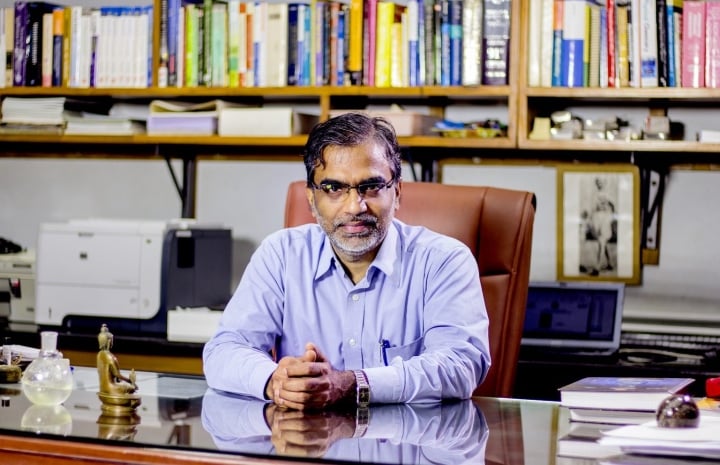
Professor Thalappil Pradeep, a scientist who is always concerned about the issue of clean water for the poor. (Photo: Madras Institute of Technology, India)
Professor Pradeep and his team explored the use of metallic nanoparticles, such as silver, to break down pesticide molecules. These metallic nanoparticles were also used to break down the bonds that transport arsenic in groundwater. This separation is the basis for the creation of a low-cost method of cleaning groundwater, helping millions of poor households in India escape the “scythe of death” due to arsenic poisoning.
By 2022, Punjab will have installed more than 80 filtration units using Prof. Pradeep’s technology, providing clean, arsenic-free water to about 150,000 people. These filtration systems are also being used in other states such as Uttar Pradesh, Bihar and West Bengal, turning polluted water into clean water for more than 7.5 million people.
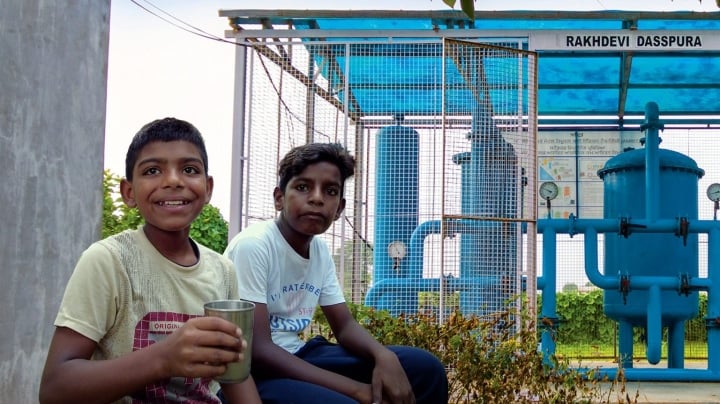
Poor children in Punjabi state (India) enjoy clean water from technology researched and developed by Professor Thalappil Pradeep. (Photo: Water & WasteWater Asia)
In remote areas, this technology proves to be very practical because it does not require electricity to operate.
“ Our water purifier works on advanced nanomaterials. These materials look like black sand, even though they contain nanoparticles ,” added Prof. Pradeep.
Arsenic and iron removal technology based on new materials is capable of removing different forms of arsenic from groundwater, with comparable efficiency.
“ As contaminated water flows through, the filter captures arsenic, iron, uranium and other contaminants. The system is inexpensive to operate due to the low cost of materials and membranes, and it does not require electricity. Therefore, it is ideal for use in rural areas ,” he said.
According to Prof. Pradeep, the system can operate continuously with only two monthly maintenance procedures, each lasting about 15 minutes, and produces less wastewater than treatment with other technologies such as reverse osmosis (RO).
For Prof. Pradeep, his invention was born out of a belief in the vital importance of clean water technology to the poor, as well as a need for low-cost solutions that could operate continuously with minimal maintenance requirements.
Efforts to inspire the scientific community
Prof. Pradeep is the winner of the VinFuture 2022 Special Prize for Scientists from Developing Countries. He was honored at a solemn and grand award ceremony held in Hanoi (Vietnam) on December 20, 2022. This is the 2nd VinFuture Prize Ceremony to honor breakthrough scientific research, contributing to reviving the world and rebuilding life after the COVID-19 pandemic.
After being honored and empowered by one of the world’s biggest science and technology awards, Prof. Pradeep plans to continue his research on water purification systems and expand his reach to more communities across India. He has founded the International Water Center with a mission to create a world with safe water.
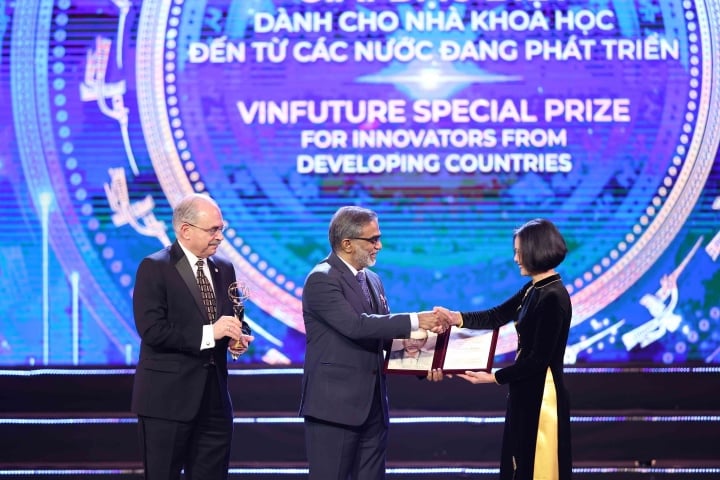
Prof. Pradeep's invention surpassed nearly 1,000 nominations from 71 countries to be awarded the Special Prize at VinFuture 2022. (Photo: VinFuture Foundation)
Currently, water sensor networks are being installed across India under a government program. Prof. Pradeep has also co-founded seven companies focused on advanced materials, capacitive deionization, air dehumidification, and advanced sensors. It is estimated that over 100 million water sensor networks are expected to be deployed in Indian households and treatment plants over the next 10 years.
“ We hope this effort will not only attract the attention of academic institutions and funders, but also inspire scientists to seek solutions to help solve the problems of people in developing countries around the world, ” he said.
Bao Anh
Useful
Emotion
Creative
Unique
Wrath
Source


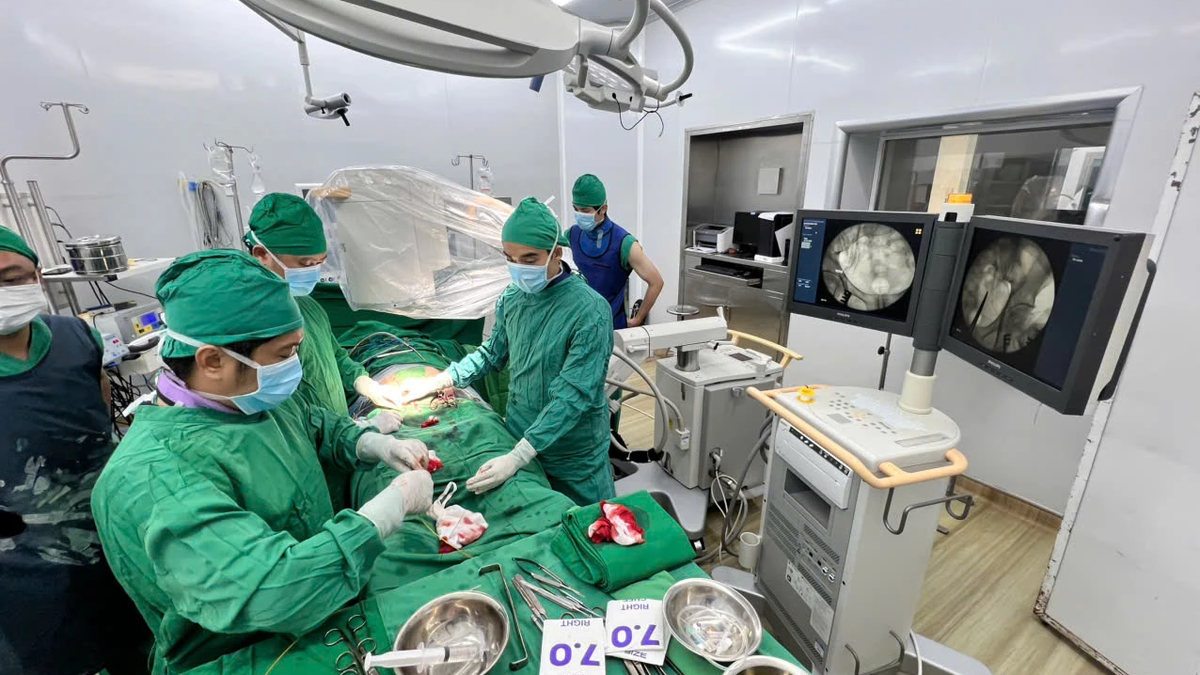







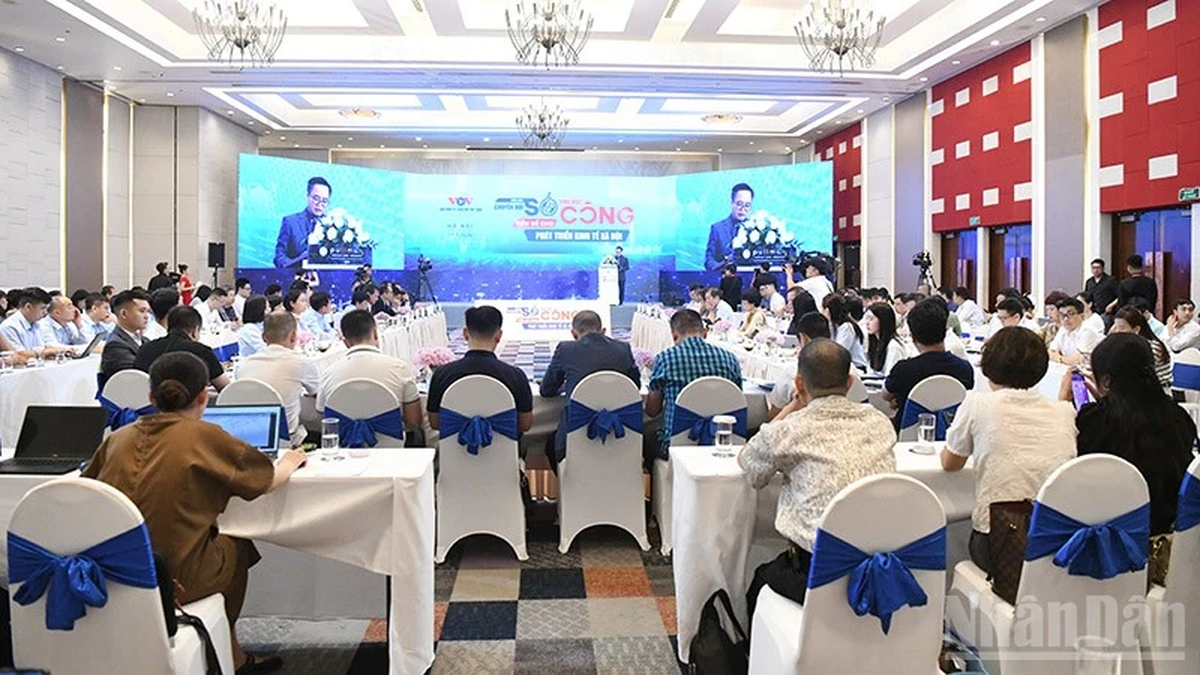


























































































Comment (0)